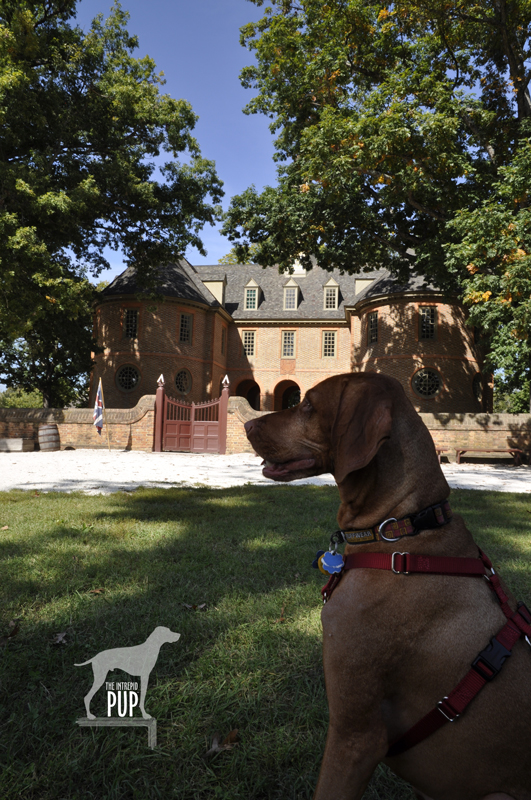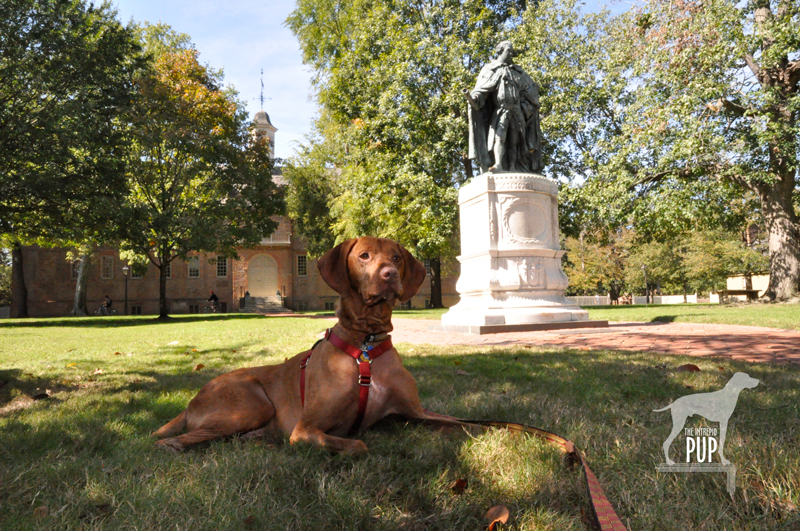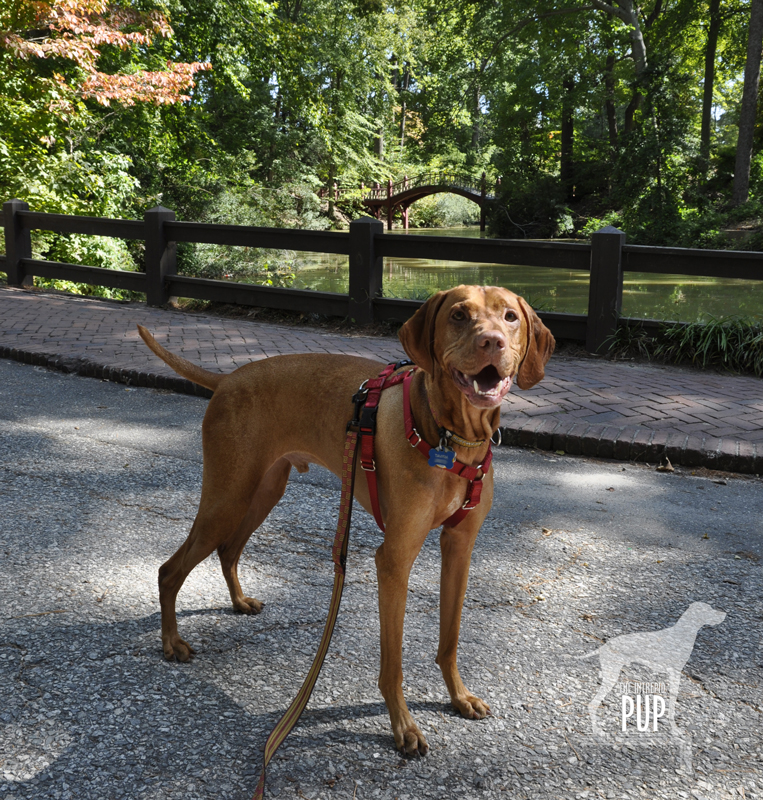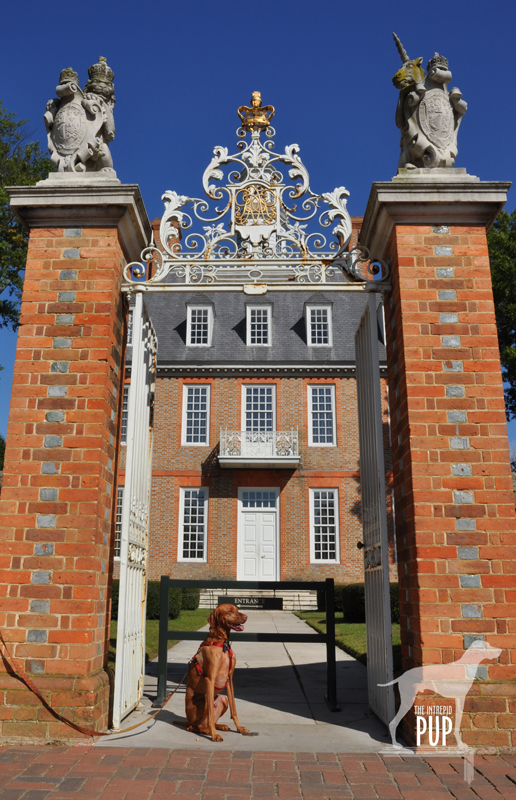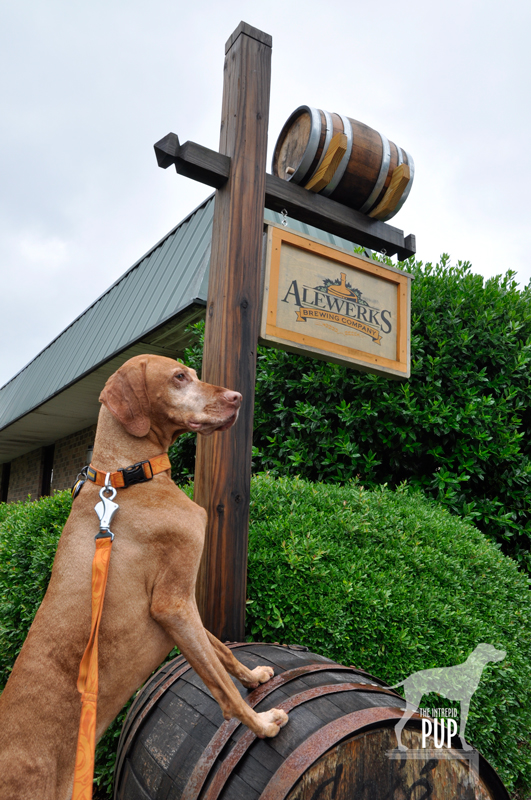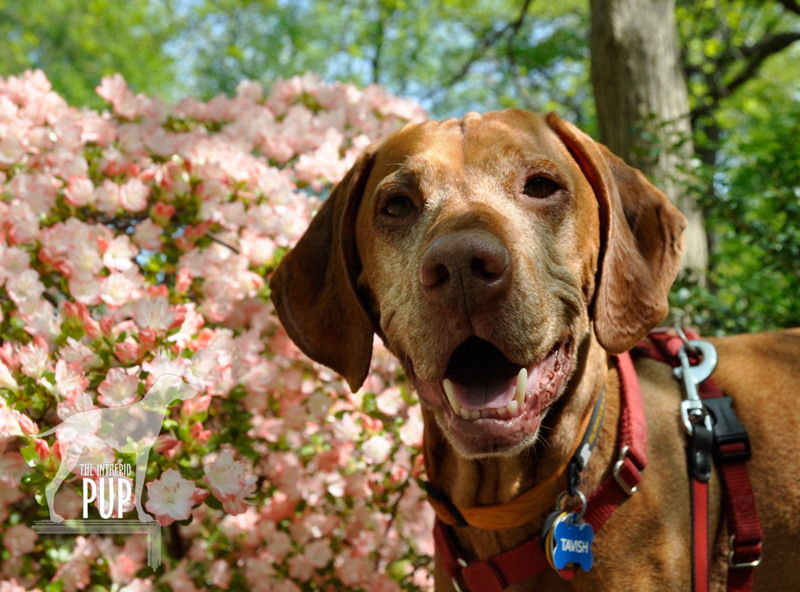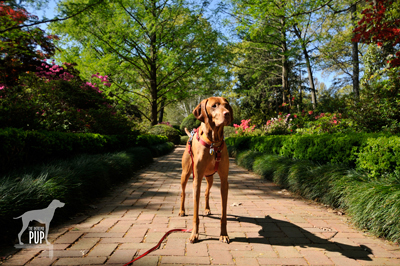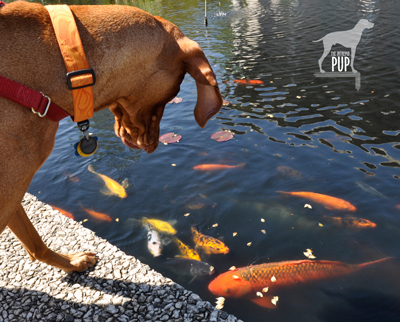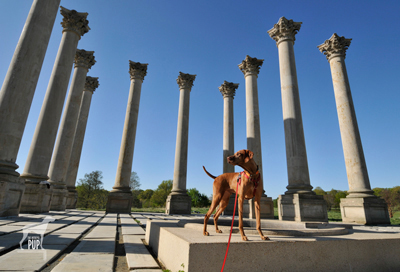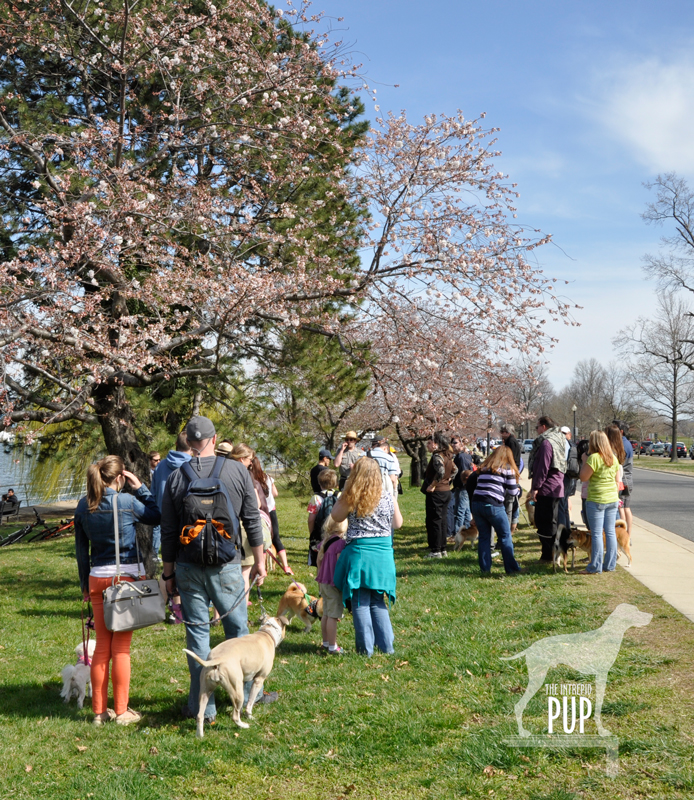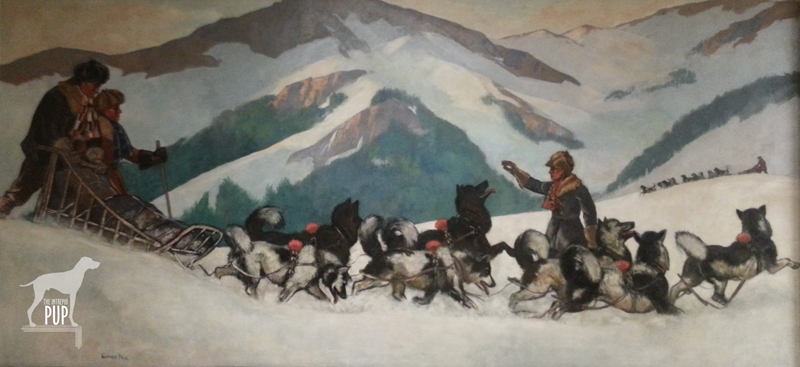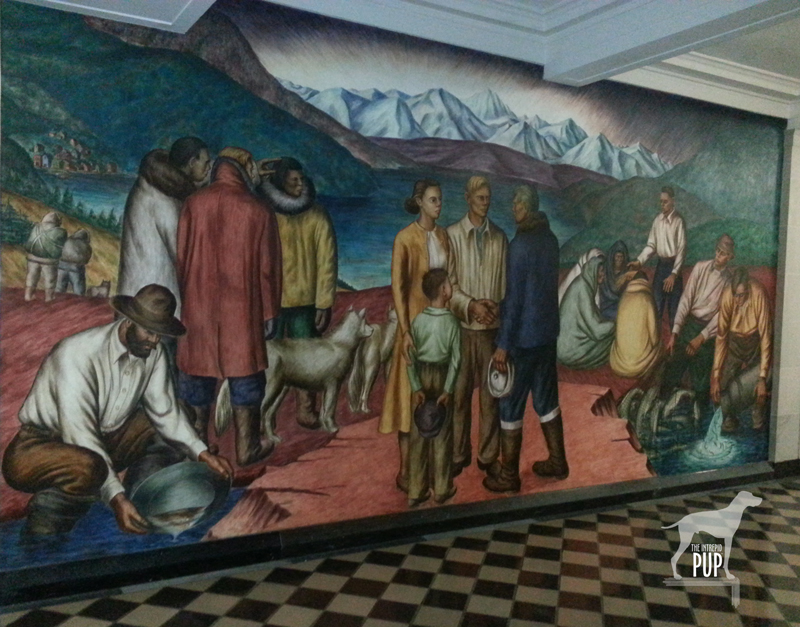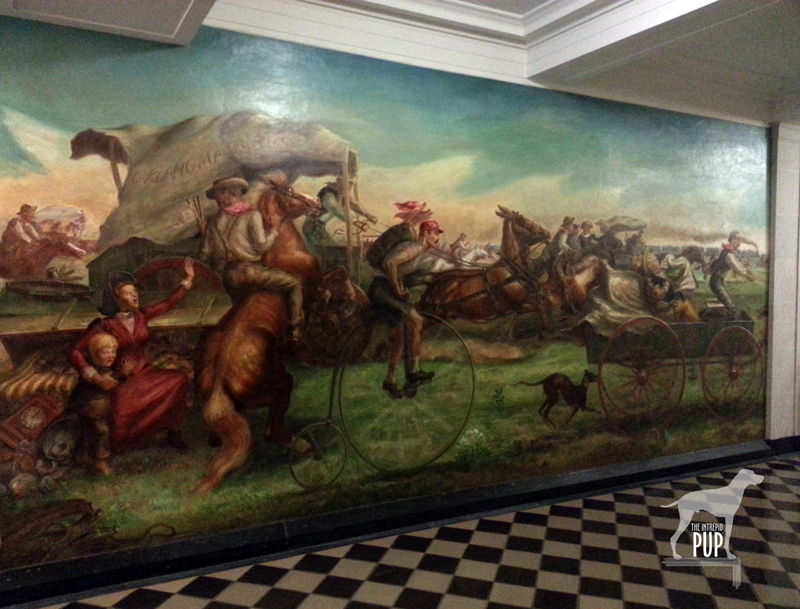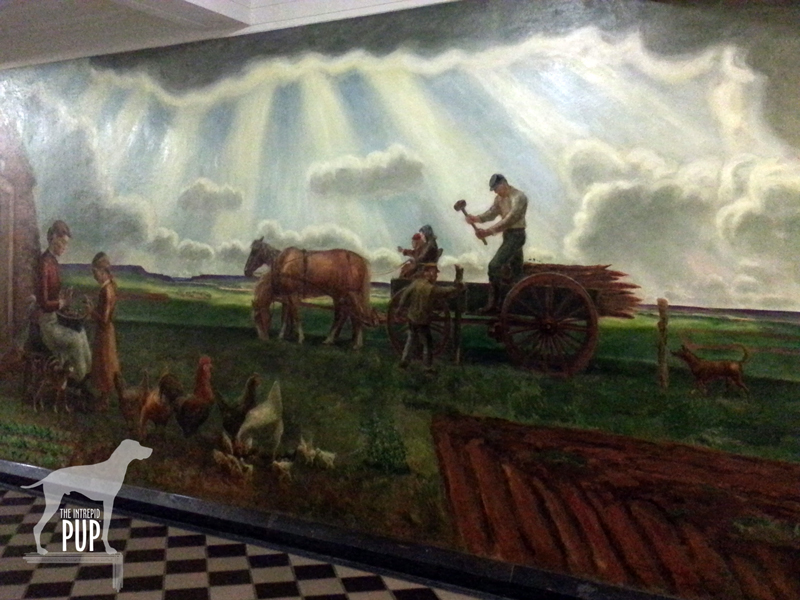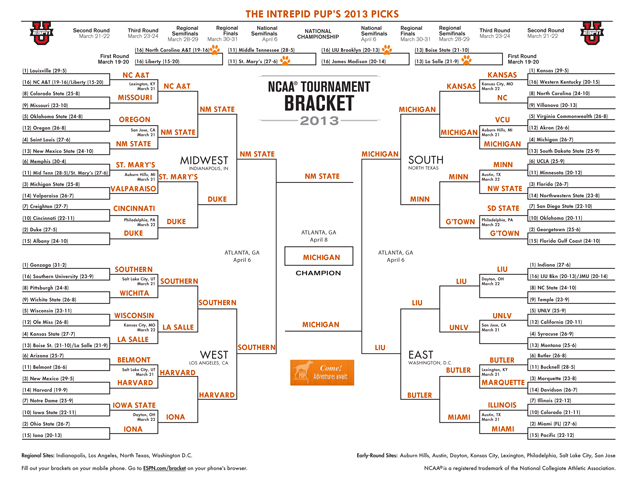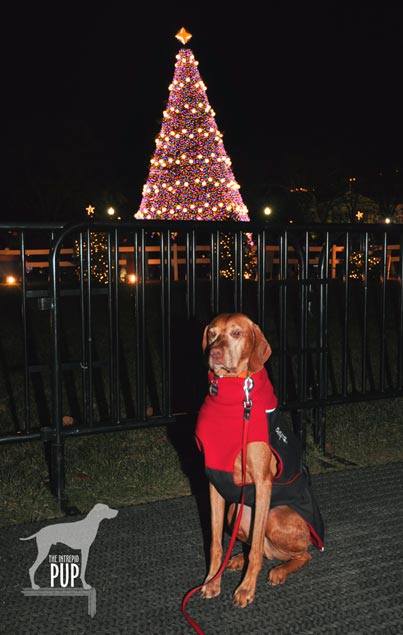
Tavish beholds the National Christmas Tree from the Pathway of Peace in President’s Park. The national tree has been illuminated by GE since 1963–originally with thousands of incandescent bulbs and now entirely by eco-friendly LEDs. The lighting design changes each year.
Intrepid Pup Tavish has been in dogged pursuit of the best of the national howl-iday scene. In Christmases past and present, he’s sniffed out “Season’s Greenings” activities at the U.S. Botanic Garden, Christmas at George Washington’s Mount Vernon, yuletide preparations at The Biltmore, and much more (see the blog index for the others). His next stop? The National Christmas Tree!
The tree lives year-round on the grounds of President’s Park, 82 acres maintained by the National Park Service and encompassing the White House itself. For much of the year visitors take little note of the evergreen on the Ellipse, but come December, it becomes the focal point of the park. Fitted with a mantel of LED lights, the tree is officially turned on by the President during a televised ceremony complete with a concert.
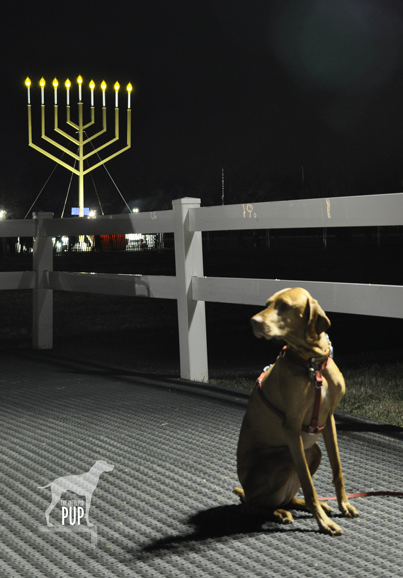
Lighting of a national menorah was a tradition begun by President Jimmy Carter in 1979 in nearby Lafayette Park. The 30-foot menorah was incorporated into the President’s Park festivities in 1987. Here’s Tavish in 2012 on the final night of Hanukkah.
President Franklin Pierce is credited with putting up the first Christmas tree inside the White House in 1856, but it wasn’t until 1923 that President Calvin Coolidge lit a national tree outside for the benefit of the American people. For more than 90 years, the storied tradition of a national Christmas tree has continued. Early on, the ceremony took place either on the White House lawn or in nearby Lafayette Park, and various trees were designated as the “national community Christmas tree.” During WWII a national tree was decorated but never illuminated. When the ceremony permanently moved to its existing location on the Ellipse in 1954 to better accommodate crowds, the National Park Service began annually cutting and transporting a tree to the site. By the early 1970s, however, they returned to having a planted tree, and there have been 5 since. The long standing 1978-2011 tree was removed after irreparable storm damage. Its replacement lasted only a year before succumbing to transplant shock. The current National Christmas Tree—a 28-foot-tall Colorado Blue Spruce—was planted in October 2012.
Just as the trees have changed, so too has the pageantry at President’s Park evolved. Various elements have been added, such as a menorah (1987), a model railroad (1993), and Santa’s Workshop (2008); others have fallen by the wayside like the Yule Log (2012) and live reindeer. Performances by local choirs and musical groups occur nightly (except Mondays) following the initial tree lighting ceremony and continue all the way up until Christmas Eve. What has remained a constant since first introduced on the Ellipse in 1954 is the Pathway of Peace, a walkway lined by cut Fraser Firs to flank the National Christmas Tree each December. The Pathway now contains 56 tree representing all 50 states, plus Washington, DC, American Samoa, Guam, the Northern Mariana Islands, Puerto Rico, and the U.S. Virgin Islands. Each is decorated with distinctive ornaments handmade by schoolchildren and artisans from that region.
 Dogging the Details
Dogging the Details
38°53′41.57″N, 77° 2′10.98″W
The National Christmas Tree, President’s Park, Washington, DC
Annually, early December to January 1 ( site is accessible 10 AM – 10 PM)
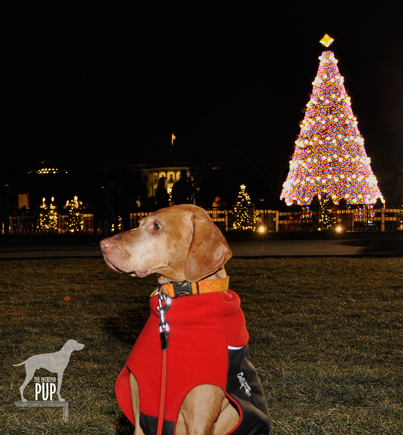
The 2013 National Christmas Tree with the White House in the background.
President’s Park ranks a “1” on the Intrepid Pup’s wag-a-meter for being relatively easy to get to and for providing a unique experience once you’re there. If you’re coming with your dog, plan on doing some walking as you can’t bring your pup on the Metro system. Metered street parking is available, though, and we’ve found that it’s usually a little easier to find a space in the blocks west or north of the White House. Timing your visit for during the week or early in the evenings also helps.
Leashed dogs are permitted on the grounds of the National Christmas Tree, and admission is free—no tickets or reservations are required. Be forewarned, however, that there are typically large crowds, which aren’t always every pup’s cup of tea. If your dog doesn’t like getting jostled or is otherwise prone to claustrophobia, simply forgo walking along the Pathway of Peace; you can still enjoy the tree lights from afar from various vantage points throughout the Ellipse. It’s also been our experience that visitors are so busy looking at the tree that they’re not necessarily looking down and may even be startled to see a pooch in their midst. For your and your dog’s comfort, we recommend visiting at an off-peak time. If you’re going at night, consider adding something reflective so your pet stands out and is visible to other passersby (Tavish’s Chilly Dog® jacket has reflective piping, and he sometimes wears his Nite Ize® SpotLit blinking LED collar light, too). Your best photo ops will come a bit away from the fray, where the Pathway leads south from the tree and opens up onto the Ellipse. With the tree and the White House as your backdrops in the middle distance, you also won’t be holding up throngs of foot traffic to get that perfect shot!

